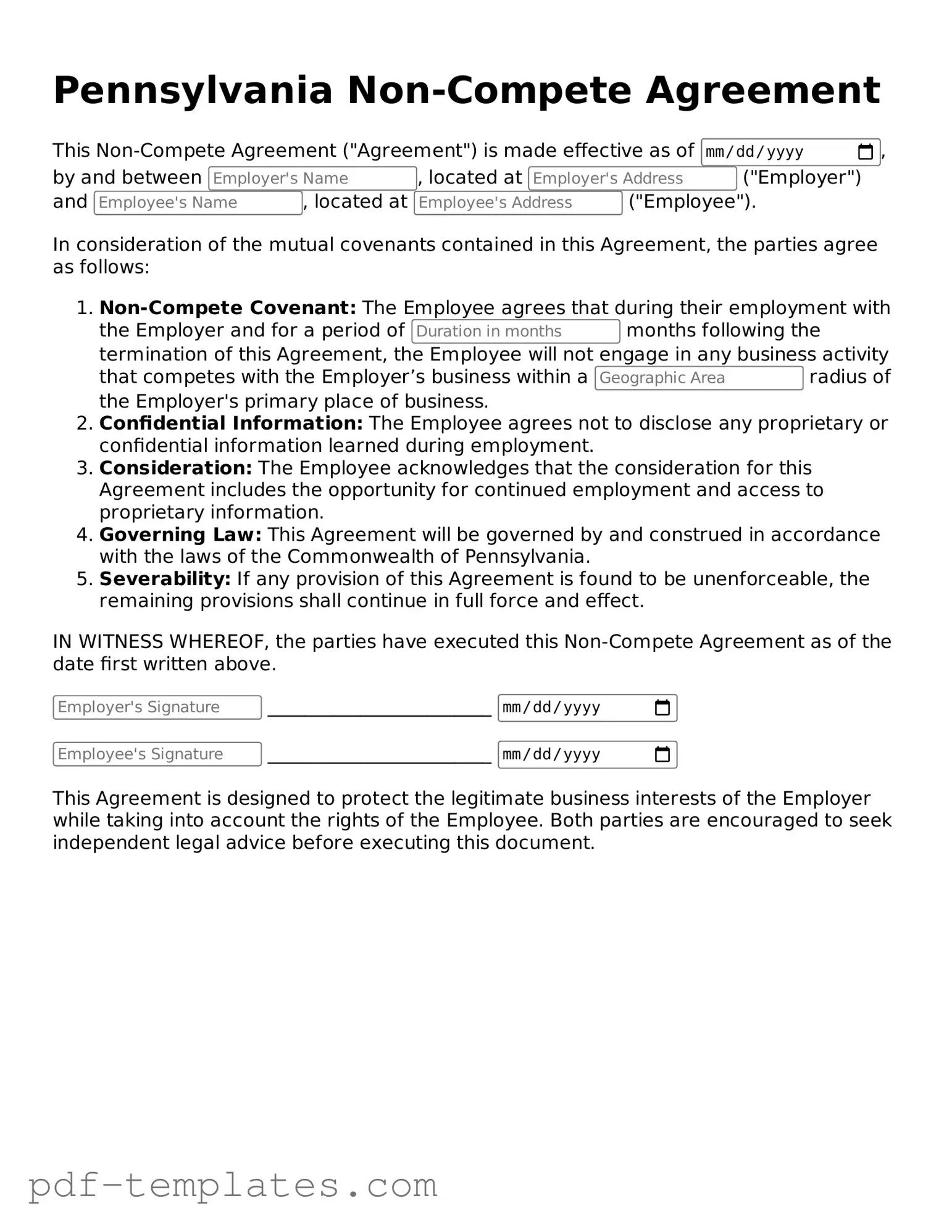The Pennsylvania Non-compete Agreement is similar to a Non-disclosure Agreement (NDA). Both documents aim to protect sensitive information. While a non-compete focuses on restricting an employee's ability to work for competitors after leaving a job, an NDA prevents the sharing of confidential information during and after employment. Both agreements are designed to safeguard a company's interests, but they address different aspects of the employment relationship.
Another document that shares similarities is the Non-solicitation Agreement. This agreement restricts an employee from soliciting clients or employees from their former employer after leaving the company. Like a non-compete, it seeks to protect a business's relationships and resources. However, the focus of a non-solicitation agreement is narrower, concentrating specifically on client and employee relationships rather than employment opportunities in general.
The Employment Agreement also resembles the Non-compete Agreement in that it outlines the terms of employment between an employer and an employee. While the employment agreement covers a broader range of topics, including job responsibilities, compensation, and benefits, it may include non-compete clauses as part of its terms. This connection highlights the importance of understanding how various agreements can work together to define the employer-employee relationship.
A Confidentiality Agreement is another document that aligns with the principles of a Non-compete Agreement. Both agreements are designed to protect proprietary information. A confidentiality agreement specifically focuses on preventing the disclosure of sensitive business information, whereas a non-compete restricts future employment opportunities. Companies often use both to ensure that their trade secrets and competitive advantages remain secure.
The Trader Joe's application form is a vital document for job seekers wishing to join this beloved grocery chain. It outlines necessary information about potential employees and provides an opportunity to showcase their unique skills and experience. Completing the form accurately can significantly increase the chances of landing a position at one of their stores. For more details, interested candidates can visit https://documentonline.org/blank-trader-joe-s-application/.
Lastly, the Separation Agreement can be compared to a Non-compete Agreement. A separation agreement is often used when an employee leaves a company, detailing the terms of their departure, including any non-compete clauses. This document may provide severance pay or other benefits in exchange for the employee's agreement not to compete. Both documents serve to protect the employer's interests while also providing clarity to the employee regarding their post-employment obligations.
